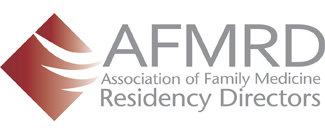First You Identify a Social Need
Ideas have a time and place. In 1941 when a delegate to the American Medical Association (AMA) House of Delegates called for a certifying board in general practice, it was not yet time for this idea. In fact, 28 years would pass before the twentieth primary specialty board would be approved.
Post-World War II medicine was demonstrating a bias away from general practice. The GI bill offered financial assistance for residency training, but there were no residencies in general or family medicine. Hospitals were beginning to require board certification for privileges and restricting access to the operating room to only those with surgical specialty training.
During the post-war period, however, much would change -- in medicine, in society, and in the organizations with a stake in the new specialty. Among the developments in medicine affecting the growth of family medicine as a specialty was the information explosion that was leading to increasing specialization. The 1966 Report of the Citizens Commission on Graduate Medical Education, entitled "The Graduate Education of Physicians" and commonly called the Millis Report, emphasized the fragmentation in patient care that was occurring. To maintain their skills and knowledge, physicians were being trained to care for only a portion of a patient's health. Few were being trained for comprehensive and ongoing care.
By the 1960s, the general public was also becoming aware of what this specialization meant to them as patients. It was increasingly difficult to find a physician to be a continuous, comprehensive provider of medical care.
Societal changes influenced the development of family medicine residencies in a second way. By the late 1960s the youngest "baby boomers" were expressing their highly developed social consciousness in many spheres. Some young people considering medical careers sought to serve society by providing comprehensive care, often in underserved areas.
Organizationally, precursors to board certification developed throughout the period. In 1947 the American Academy of General Practice (later Family Physicians) was established. Also in 1947 the Davis-Truman Special Committee of the American Medical Association (AMA) studied conditions of general practice; this was just the first of several committees that would examine various aspects of the issue over the next 20 years. In 1948 residencies in general practice began to develop, and pilot residencies in family medicine were set up in 1959.
By 1965, after repeatedly voting down resolutions to create a certifying board, the Congress of Delegates of the Academy voted to authorize application for a certifying board. Once committees delineated the core content for the residency curriculum and the "Special Requirements for Residency Training in Family Practice," the stage was set. Finally, following approval by the Liaison Committee for Specialty Boards, the Advisory Board for Medical Specialties, and the AMA Council on Medical Education, the American Board of Family Practice, Inc. (ABFP) was incorporated on February 8, 1969.
